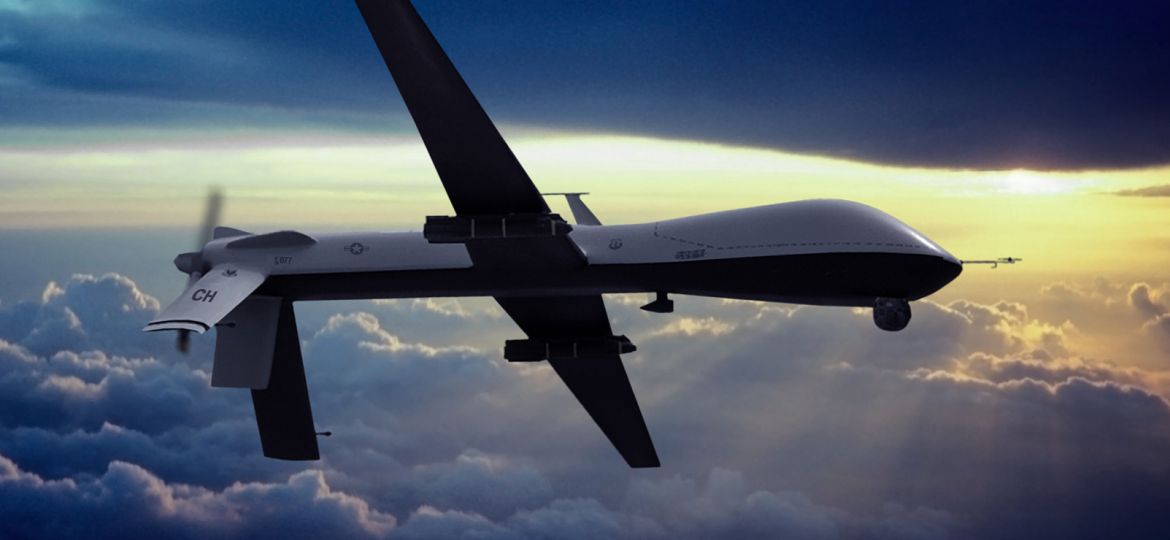
Advanced warfare platforms are increasingly using unused spectrum, now the Pentagon needs a system to cripple it
The US military is cultivating new electronic warfare technologies that, in real time, use artificial intelligence to learn how to jam enemy systems that are using never-before-seen frequencies and waveforms.
Although this “cognitive electronic warfare” is still in its nascent stages of development, scientists developing these systems told Defense News the technology could appear on the battlefield within the next decade.
Current electronic warfare techniques are still very similar to the original ones created in the Vietnam era, even as the systems have become more advanced, said Yiftach Eisenberg, deputy director of the Defense Advanced Research Projects Agency’s (DARPA) microsystems technology office. Essentially, the military’s approach has been to study enemy systems for vulnerabilities, figure out ways of disrupting them and then building a “playbook” filled with different EW tactics.
“That approach has worked well for us in the past when the adversaries systems were relatively stable,” in other words, when it took enemies years to develop analog sensors and communication systems, he said.
In recent years, however, there has been a “fundamental shift” to systems that are digital and reprogrammable in nature, and thus can adopt different frequencies, signal characteristics and waveforms to avoid being jammed.
“We need to have the ability to respond to new threats, new waveforms that those systems are using that we haven’t anticipated,” Eisenberg said. “If things are changing quickly, then we need systems that can respond in similar timeframes to enable us to protect our aircraft.”
Because of the highly sensitive nature of cognitive EW developments, DARPA and its industrial partners prefer to keep the inner workings of such systems under wraps. But, generally speaking, all cognitive EW systems share the same process: characterizing a threat, using machine-learning algorithms to exploit an adversary’s vulnerability, and ensuring that the countermeasure worked.
For instance, when a cognitive EW system is protecting an aircraft against a communications jammer, it will measure a variety of data — the power level, frequency and bandwidth of radio signals, for instance — and make its best guess on how to counter it, said Josh Niedzwiecki, BAE Systems’ director of the sensor processing and exploitation group.
“We use an optimization algorithm that says, ‘From what I’ve learned in the past and what I’ve seen before, given a signal that looks like that, here’s the anti-jam techniques I’m going to apply,’” he said. If the aircraft’s systems are functioning properly afterward — something the EW system can detect — the system will have “learned” from the situation and can apply it in future scenarios.
DARPA began pioneering cognitive EW in 2010, and has started two flagship programs to push capabilities forward. The first, Behavioral Learning for Adaptive Electronic Warfare or BLADE, seeks to use the technology to jam communication systems, while the Adaptive Radar Countermeasures program is targeted to defeat radar, said Paul Tilghman, who manages both DARPA programs.
The BLADE program recently culminated with a February flight demonstration where an aircraft, equipped with the BLADE system created by industry partners Lockheed Martin and Raytheon, had to jam enemy communications systems.
“We substantiated a broad variety of communication systems that we might expect to exist on the current battlefield or battlefields of the future,” he said. “We deprived the EW system of really knowing anything about those communications systems ahead of time.”
The test was successful, and the program will now transfer to a military service that will continue maturing the technology, said Tilghman, who declined to provide details about the system’s rate of success as well as which service plans to further develop it.
The ARC program is moving toward a 2018 flight demonstration, he said. BAE Systems and a Leidos-Harris team have spent the past 18 months refining their systems in laboratory settings ahead of a potential downselect.
“We want to present the system with a variety of radar systems” during the flight demonstration, he said. “We want to basically make sure that the playbook doesn’t already account for the systems that it’s going to see, and then we will actually see that EW system in real time learn how to counter in this case the radars that we actually present it.”
Exactly how the services will adopt cognitive EW systems and techniques is still opaque. The Air Force has stressed the importance of electronic warfare capabilities in is Air Superiority 2030 flight plan, but details on potential programs and technologies linked to that effort remain classified.
The service in July posted a request for information for “Precise Reference Sensing for Cognitive EW.” According to the solicitation, the objectives of the program would be to “perform navigation warfare technology research, including electronic attack, electronic protection and electronic support techniques for cognitive electronic warfare applications.”
There is plenty of room for to further refine and implement cognitive EW systems, Eisenberg said. Because the technology is so new, scientists and engineers have focused foremost on developing artificial intelligence and algorithms that can create countermeasures to take down enemy systems.
However, computing horsepower will play a more important role going forward, Tilghman said.
“Computing horsepower equals intelligence,” he said.
“The more bang for your buck in terms of computing horsepower that you can fit onto the platform of interest, the better off you’re going to be in terms of cognitive EW.”
















